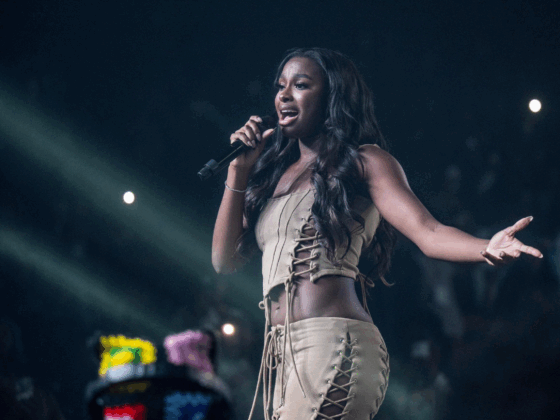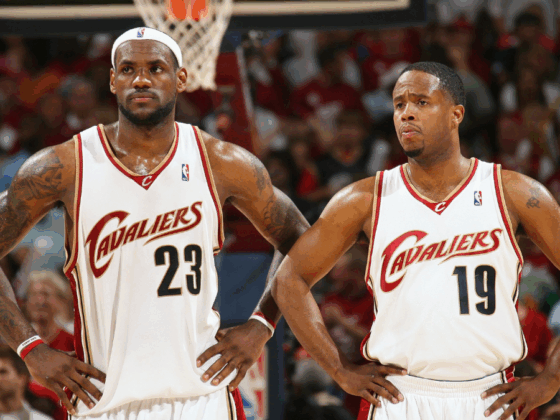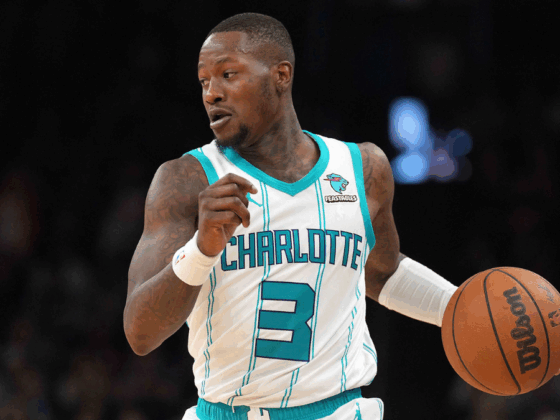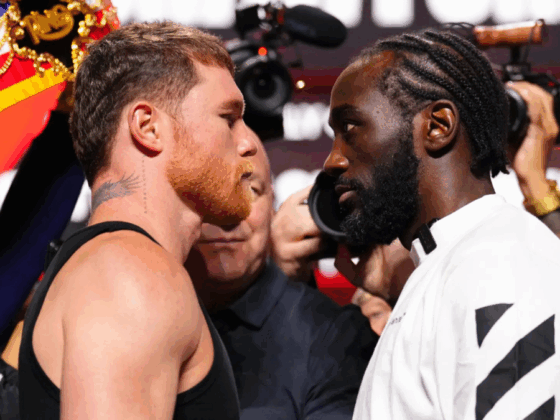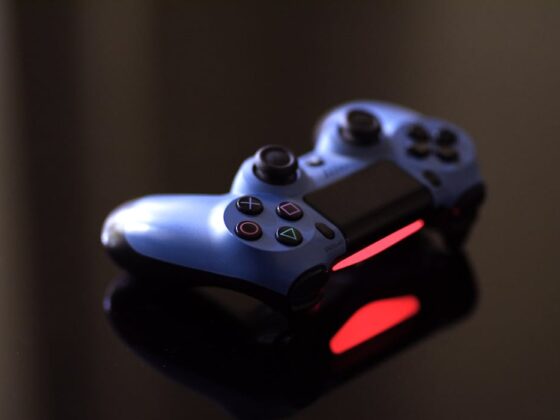
All stats of Dec. 15.
With less than 30 seconds remaining and the Minnesota Timberwolves down a point, Jimmy Butler holds the ball in his hands, complete control over the result of a crucial possession. He surveys the court, standing two steps past centercourt and adjacent to Minnesota’s new logo, which signals a new era for the Timberwolves.
Then, with the Philadelphia 76ers’ Dario Saric defending, Butler begins his move. He takes three methodical, composed dribbles before the hard-nosed Taj Gibson sets a screen on Saric as Joel Embiid has now switched onto the All-Star swingman. Embiid, weary of Butler’s penchant for attacking the rim, sags way off, with his feet anchored just outside the paint. In one fluid motion, Butler dribbles between his legs, collects and rises. Embiid, recognizing that his counterpart isn’t going to challenge his 7-foot-2 frame inside, rushes to try and contest the shot, but to no avail.
The ball glides through the net, giving the Timberwolves a 100-98 edge with just 16.8 seconds remaining. Butler, who finished with a season-high 38 points in the loss, was acquired for moments like this, providing skilled perimeter play and a steady veteran presence in both playoff games and playoff-esque atmospheres.
During June’s NBA Draft, the Timberwolves sent Zach LaVine, the No. 7 pick (Lauri Markkanen) and Kris Dunn to Chicago to obtain a bonafide superstar and turn the corner on the franchise’s rebuild, with the intention of breaking their league-worst 13-season playoff drought. Through the early part of the 2017-18 season, Minnesota was flourishing, experiencing an encouraging 13-9 start, but it felt incomplete. Jimmy Butler hadn’t been the 2016-17 version of Jimmy Butler: a third-team All-NBA selection.
Butler scuffled through 20 contests in October and November, averaging 17.5 points, 5.5 rebounds and 4.5 assists, putting up just 14.2 shots each night while ceding touches and looks to the young pups, Andrew Wiggins and Karl-Anthony Towns.
Both Wiggins and Towns outpaced Butler in shots per game during the first two months of the season, averaging 15.6 and 14.6 attempts respectively. And not only were they firing away more frequently, each led the Timberwolves in usage rate during October and November.
Towns sported a 23.2-percent usage rate to spearhead Minnesota in October while Wiggins took charge in November with a 25.7-percent clip. Meanwhile, Butler, the star whose arrival was to supposedly usher in a more prosperous generation of basketball in Minnesota, took a back seat, primarily in November, where the three-time All-Star held claim to a paltry 19.8-percent usage rate – well off his 23.1-percent mark of last season.
Through seven December contests, Butler has donned a red suit and white beard, delivering early Christmas gifts to Timberwolves fans, averaging 26.4 points, six rebounds and 5.9 assists on 51.2-percent shooting, hoisting up 18.4 shots each game with a 25.6-percent usage rate. Enabling his return to All-Star status is rekindled aggressiveness, blitzing to the basket more often and scoring in the paint.
In October and November, Butler attempted 40.1 percent of his shots from nine feet or closer, cashing in on 54.4 percent of them. During his torrid December stretch, the former Marquette Golden Eagle is attempting 44.2 percent of shots from that range, finding increased success, making good on 68.4 percent of those opportunities. Last season, Butler shot 58.2 percent from that area. While his clip in December isn’t entirely sustainable, he’s shooting just 32.3 percent from beyond the arc this month, hinting at the fact that a negative regression to the mean from inside should be accompanied by a positive regression to mean from outside.
Additionally, Butler is making 68.3 percent of his attempts inside the paint the past seven games, up from 54.7 percent on 6.4 attempts throughout the first 20 contests.
Watch here as Butler, who shot just 5 of 17 in this game – a 92-89 loss to the Washington Wizards on Nov. 28 – is isolated on the right side of the floor against a poor, undersized defender in the 6-foot-4 Jodie Meeks, but still opts to settle for a contested jumper with 14 seconds remaining on the shot clock:
Pair that with a similar clip from Minnesota’s 112-106 win against the Los Angeles Clippers on Dec. 3, in which Butler scored a then-season-high 33 points on an efficient 10-of-20 shooting, and it reveals the recent change in his approach:
Butler isn’t deterred by the shot-blocking wiz DeAndre Jordan, who is lurking in the paint. Instead, he dives into the key immediately upon catching the ball, absorbs the contact laid on by Austin Rivers and finishes strong inside.
Playing 84 percent of his minutes at the 2-guard position this season, Butler is bullying smaller players, settling for midrange jumpers less often in December:
Forceful, decisive moves toward the lane represent a change from Butler’s early-season shot selection:
An increased willingness to charge the lane has resulted in Butler finding more opportunities at the free-throw line. A season ago, he ranked fourth in the NBA in free-throw attempts per game, getting to the line an average of 8.8 times each contest. This season, he sits just 22nd, averaging 5.3 attempts, and has already matched last season’s total with three games absent of trips to the line.
Yet in December, Butler is finding his way to the charity stripe 6.7 times each game and knocking down 91.5 percent of them, both of which are marked improvements from the 4.8 attempts and 83.1 percent he averaged the first two months.
Coming around a screen from Towns, Butler freezes Steven Adams with a vicious in-and-out dribble, blowing by the Kiwi and charging toward the rim before drawing a foul.
Against the Golden State Warriors in early November, Butler is presented with an opportunity for a transition layup, albeit a contested one, but opts for an equally challenging midrange jumper instead:
The Timberwolves have provided their new star, a gifted one-on-one scorer, with increased freedom in December as 65.2 percent of his field goals have been unassisted. In October, that number was 58.6 percent before plunging to 50 percent last month. Putting the ball in Butler’s hands more often has allowed him to foster greater rhythm, manifesting itself in his success from the midrange area. Amid his sluggish start, Butler converted just 33.7 percent of such shots, but in December, he’s finding the twine 39.5 percent of the time.
With a plodding Maxi Kebler isolated on Butler, the four other Timberwolves clear out and allow the combo guard to have his dance with the German big man.
Again, Butler wouldn’t have been able to convert this silky, one-legged turnaround fadeaway over Sam Dekker’s outstretched arms if he hadn’t boasted an opportunity to first establish rhythm:
Early in the season, Minnesota attempted to fit its square-sized superstar into a circle-sized role, often posting him on the block against smaller defenders and improperly portioning his off-ball strengths. He compounded this misuse by settling for jump shots in isolation and neglecting the aggressiveness that has come to define his game.
This month, the Timberwolves have taken the reins off Butler (he’s playing 40.7 minutes per game) and allowed him to revert back to his 2016-17 ways. Yet they’re also better harnessing his off-ball skills, using him as a cutter and spot-up shooter and sending him around a plethora of screens. Butler is hitting his stride in Minnesota, assuming increased ball-handling duties, attacking the rim and getting to the line. Labeled a consensus top-15 player a season ago, Jimmy Butler has rediscovered that game – it just took longer than previously anticipated.
All stats and videos via NBA.com, Basketball-Reference, Team Rankings and 3 Ball.
